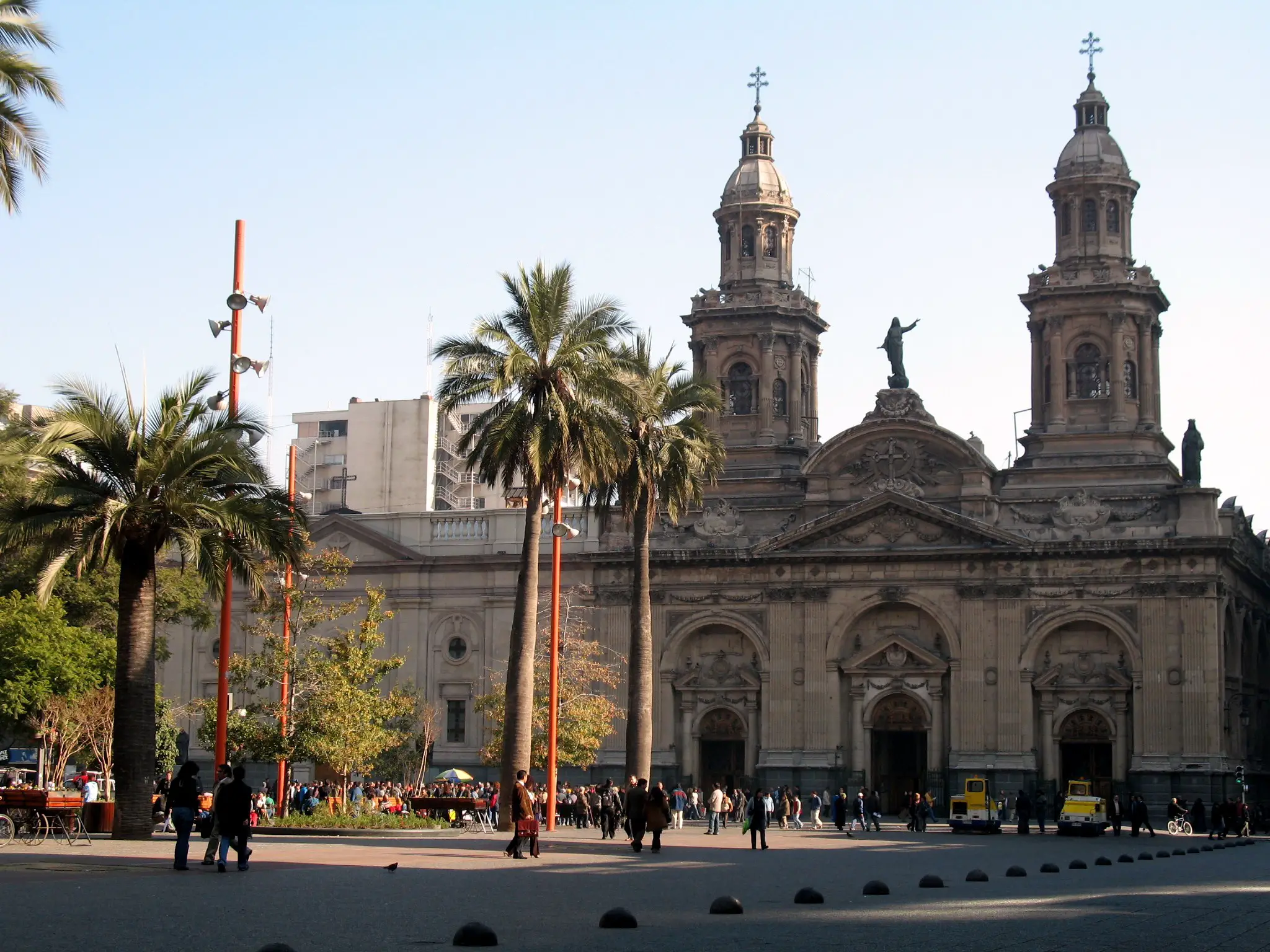Most people don’t realize how big Chile is.
Yes, sure, it’s a very thin territory, stuck between the Andes mountains and the Pacific ocean. And many areas of the country are widely unpopulated. But it’s over 4,300 kilometers long, North and South, covering a wide diversity of climates – from the driest desert in the world in the North, to pleasant Mediterranean climate and the Center-South, cold heavy rains in the South, and the harsh, windy steps of Patagonia.
Santiago is right there, in the middle, with a warm dry climate that is very similar to California’s Central Valley.
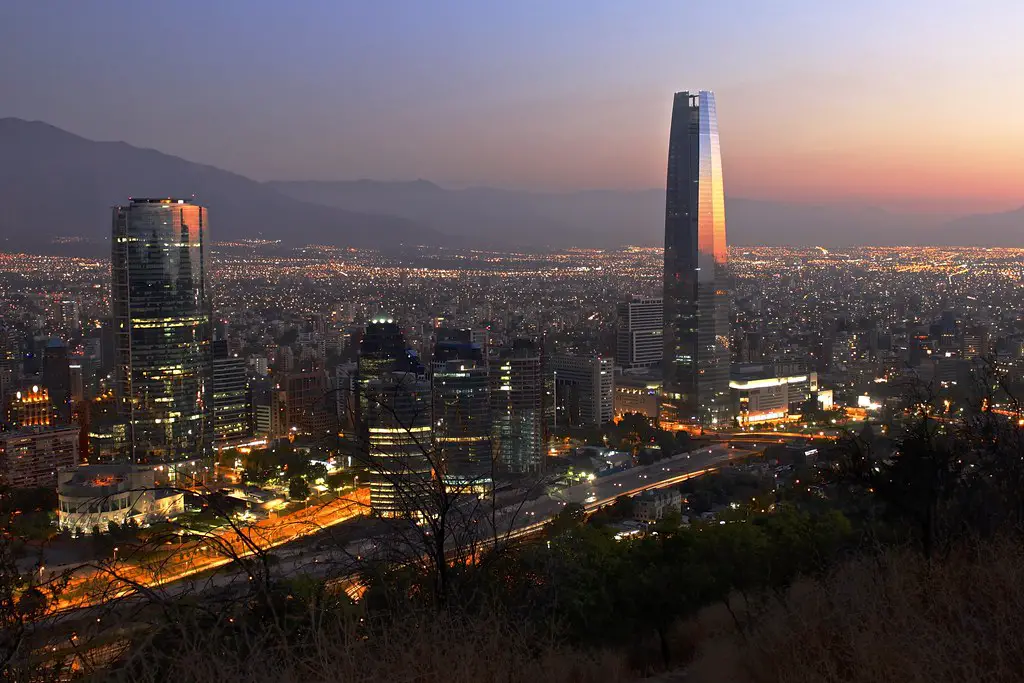
And because of this peculiar geography, Chile is also widely disproportionate: about half of Chileans live in Santiago and nearby urban cities of Valparaiso and Viña del Mar, just 120 kms away. Everything happens there, in terms of economical power, political decisions, infrastructure, cultural events. Even though it doesn’t make sense when you look at a map of Chile, it is very centralized. You could say that Chile is Santiago – and likewise, that Santiago is not Chile.
In my 15 years living in this country, I have always felt like Santiago de Chile is the best entry point to South America – the easiest, I should say. Why? Because this is a place where you won’t feel a big cultural shock when you arrive. Chile is not a third-world country anymore, and some parts of Santiago, especially the Eastern districts of Las Condes and Vitacura with their modern high-rise buildings and big malls and fancy restaurants, feel like any Occidental metropolis. Trust me, the feeling is different when you arrive in Lima, Peru or Rio de Janeiro!
Table of Contents
Now, what are the first things to know when you arrive in Santiago?
Chile is far from pretty much everywhere, except its neighbors Argentina, Peru and Bolivia. With this being said, most international flights to Santiago are long-haul, night flights. So when you get there, you will most likely be tired and/or jet-lagged. Which is why it’s better to be prepared beforehand for what is a bit of a chaotic arrival.
There is currently only one international exit at Santiago airport, which is way too narrow, and you will literally be assaulted by a bunch of drivers with their signs who are waiting to pick up passengers. The best thing to do is to just ignore them and walk through.
While we do have Uber and other similar platforms in Chile, there is a bit of a grey area regarding whether or not they are legal. You won’t be arrested if you take an Uber: they are very common in Santiago and everybody uses them. However, they are not allowed to pick people up at the airport. They can only drop you off. Besides, even though there is free WiFi at the terminal, it barely works, which is not convenient if you want to call a driver.
Instead, if you want to have private transportation from the airport to Santiago, there are three different options:
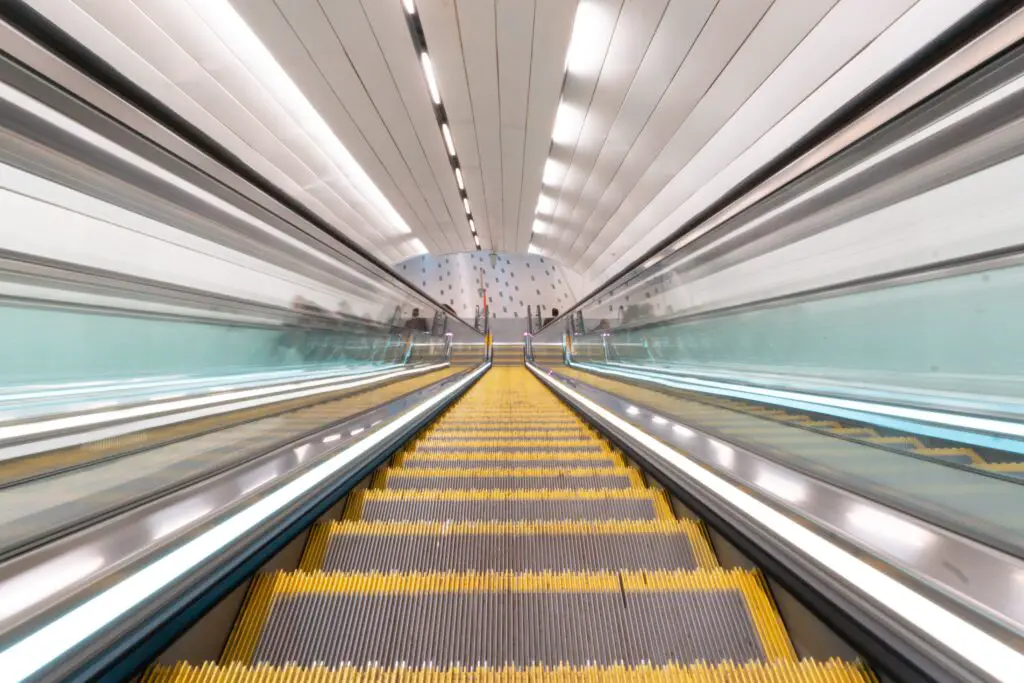
1. Just take a regular cab.
However, you cannot pay them with a credit card: you will need local currency. So it’s better to change the equivalent of US$ 50 at the airport and use that money for the taxi. A race from the airport to the city should cost, depending on the area of the city where you are going, anywhere between CLP 15,000 and CLP 25,000 (roughly between US$ 20 and US$ 35, including taxes). Make sure to ask for the fee before getting into the cab, though. If they give you a price higher than US$ 35, they are trying to take advantage of you. And you can always request them to use the taximeter, but it’s actually better to agree on a flat fee beforehand.
2. Book a shared drive at the airport.
Right after going through customs, you will walk into an area where a few companies such as TransVIP and Transfer Delfos offer transfers to the city. They operate vans for up to 7 people, are safe and comfortable. You can book right there at the counter. Usually, the wait is just a couple of minutes before your drive is ready for you. Most users are going to the same area in Santiago, so it normally does not take that much longer than a taxi driver. Fees are typically between US$ 10 and US$ 15 dollar per person – which means you are better off taking a cab if it’s two of you. You can actually book a taxi through them. It might be a couple of bucks extra, but that allows you to pay with a credit card at the counter.
3. Pre-book a private driver.
This is the most expensive solution, but the safest and the most comfortable one. A driver will wait for you at the exit with a sign at your name, will handle your luggage and get you to his vehicle. This service typically costs between CLP 30,000 and CLP 50,000 (roughly between US$ 40 and US$ 65, including taxes), but it’s really the smoothest one. And with a little bit extra, you can request an English-speaking driver. And you can book online with a credit card. Companies that offer this service are usually oriented towards tourism, such as chileprivatetours.com
And I don’t mean to frighten you, but…
There are a lot of illegal drivers at Santiago airport who look for lost foreign tourists and offer their help… only to rip them off afterwards. If you get there and decide to take a cab, go straight outside and talk directly to the cab drivers in the black-and-yellow cars. Any intermediary is suspicious.
Finally, if you are on a budget
You can take a shuttle bus CentroPuerto from the airport to the Metro station Pajaritos. They run every 10 minutes or so, from 6am to 11pm approximately. You have to pay the ticket with cash though (it currently costs 1700 pesos one way, a bit over US$2). It is the cheapest option, but then if you carry a lot of luggage, using the subway is not convenient. And you also need to buy a Subway card when you get to the station. This can be paid by credit card.
And since we are talking about credit cards:
In Santiago, you will be able to pay with most credit cards (VISA, MasterCard, AmEx) in most places. However, I would highly recommend you to take out some local currency the day you arrive, because there are still many small businesses that don’t accept them – especially when you go out of the city. You can change dollars, euros, Canadian dollars or Australian dollars at the airport itself, but the exchange rate they will give you is not very good. So the best thing to do is to change a small amount there (say, 50 dollars), and then go to a currency exchange store downtown – either near Santiago’s cathedral if you are located in the Historical center, or in Avenida Pedro de Valdivia Norte if you are in the East part of the city. These two places are where you will find the best rates.
OK. Now you are at your hotel,
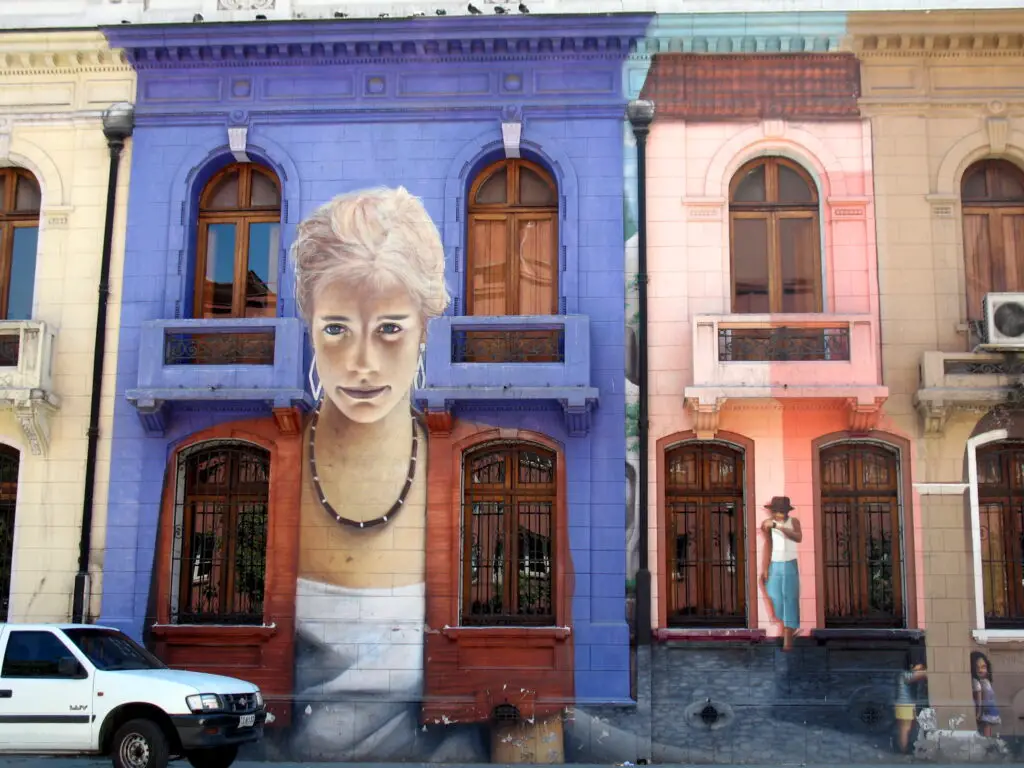
AirBnB or whatever accommodation you have found. What now? Well, you may have read here and there that Santiago is a bustling, lively city. It is true. But it’s also a very large city, and you want to go to places that are not only lively, but also nice and friendly.
While the typical places to see and do include the Plaza de Armas, the cathedral, the hills of Cerro Santa Lucia and Cerro San Cristobal, none of these places are really spectacular – they are nice, sure, but not spectacular. Santiago being located near a seismic fault, it is prone to earthquakes and for that reason, doesn’t feature many beautiful old buildings anymore.
But it does have no quaint, nice neighborhoods with a lot of alternative shops and restaurants, such as tiny Barrio Lastarria, Barrio Yungay, or Barrio Italia. This is where the locals go out. Each of them boast a new gastronomy scene, re-using old crumbling houses and transforming them in vintage stores or places to eat.
If you are into street art, bars and parties, you have to go to boheme Barrio Bellavista. The area is covered with murals, it is close to a couple of universities, so you will find a lot of cheap bars and discos there. That’s the place for nightlife, and the perfect area to learn salsa, merengue, reggaeton or bachata with locals. Careful though: there are many pickpockets around there. Always keep a hand on your bag – I should know: I have been robbed twice there.
Now, if you want to do something more cultural:
Santiago has a lot of museums that are somewhat underrated. If you are into History, the Precolombian Museum is a must. And if you want to understand better the times of the dictatorship (which still has a very strong influences and consequences nowadays), you should go to the Museo de la Memoria. Some of the exhibits there will punch you in the gut, though.
There is also an interesting Fashion Museum – which is a bit surprising here, considering that many Chileans have a very limited sense of fashion. But my hidden gem is the Ralli Museum, a free private museum that has a surprisingly nice collection of fine arts including some world-famous names such as Dali and Picasso. And almost nobody goes there.
If you are into architecture
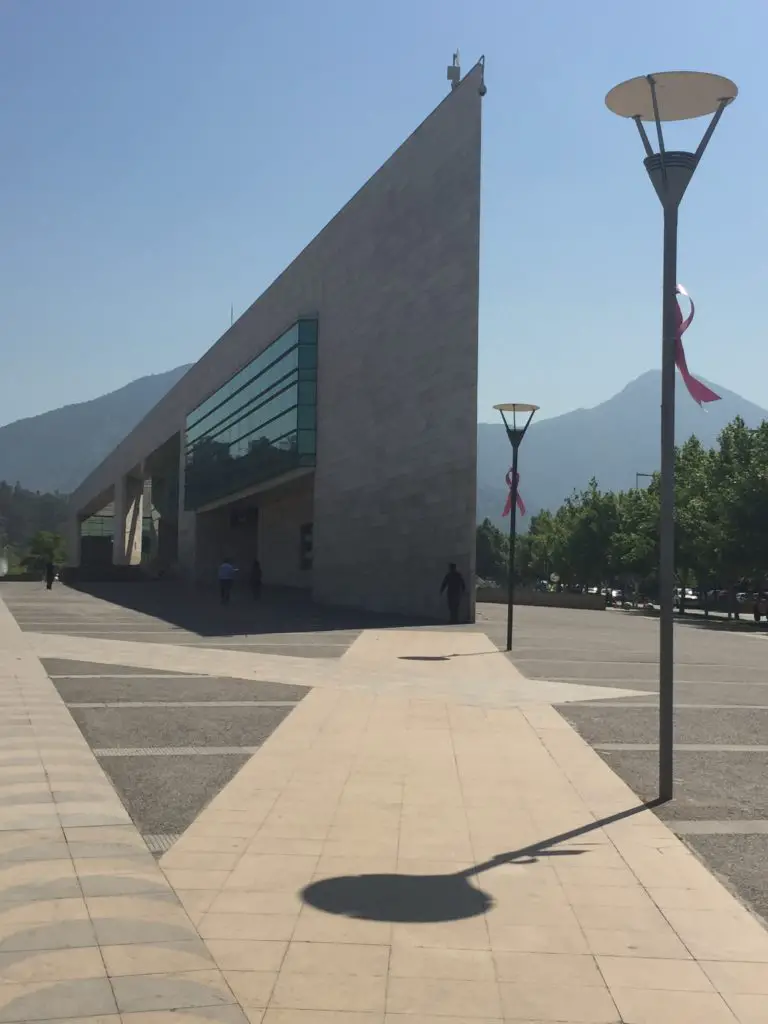
As noted before, there aren’t too many old buildings. The cathedral is worth visiting inside, so is the Fine Arts museum – more for the architecture than for the collections. But the area of interest here is really the modern district of Vitacura and Las Condes, which is nicknamed Sanhattan (the contraction of Santiago and Manhattan), because all the modern high-rises buildings, some of them constructed by internationally acclaimed architects.
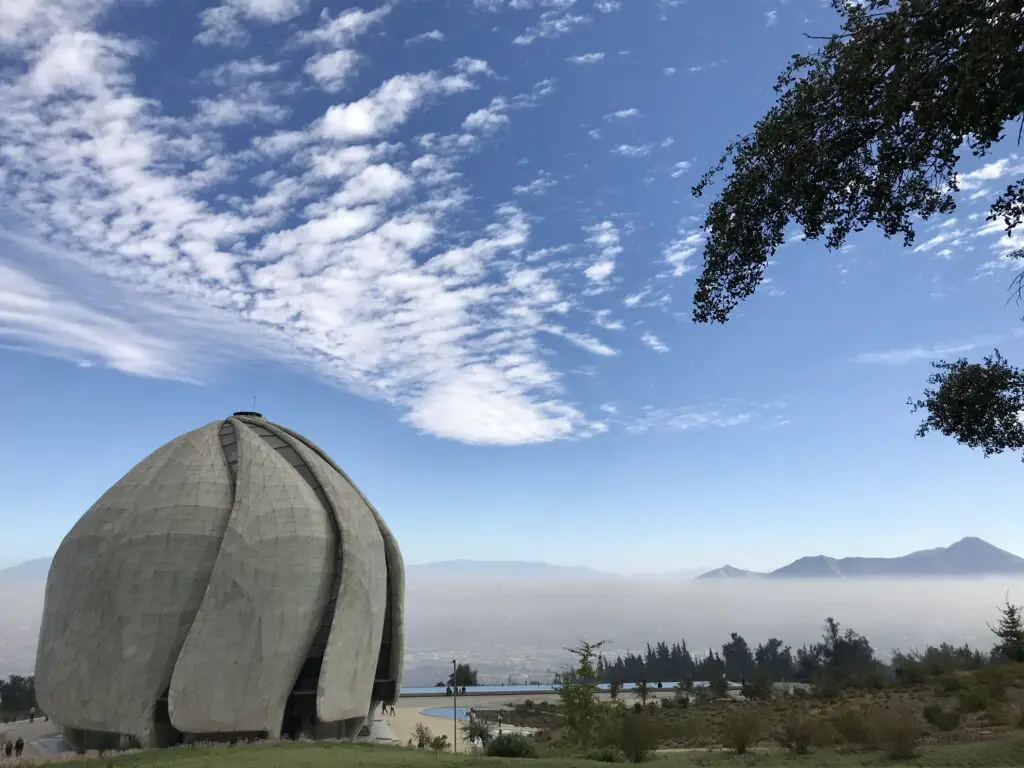
But if there was only one place not to miss, it’s the Ba’Hai Temple. It’s quite far off the city center, but reachable with public transportation. Located at the foot of the mountains, it has a unique geometric structure that overlooks Santiago, and is lit af night. It’s a great place to come and relax from the city frenzy, and to observe the sun set.
And last but not least, let’s talk about food.
There is something curious about food in Chile. Because of the variety of climate we have, and the omnipresence of the sea, there is a wide variety of great fruits, vegetables and seafood. All excellent ingredients. However, Chileans are not known for their gastronomy. And it’s true: there is no culture of fine dining like there is in Peru, for instance.
But there are some really nice specialties that everybody here should try:
Empanadas

They are everywhere. The most typical being empanada de pino, which has nothing to do with a pine tree, but contains minced meat, onions, an olive or two, and a bit of egg. The other second most popular is the cheese empanada. My favorite? Cheese and shrimps empanada. There is no place in particular to recommend, but if you want to go on the safe side, try the ones sold at one of the many Castaño stores.
Pastel de choclo
While this is probably Chile’s most typical dish, it’s not something that I would recommend to eat at a restaurant in the city. This is more something to have in the countryside.
Pisco sour
Chile’s national drink. Very good and refreshing, but somewhat pricey. If you want something more low-key, try piscola, a mix of pisco and Coca-Cola, which is the youth’s favorite. Every decent bar in the country serves them.
Mote con huesillo
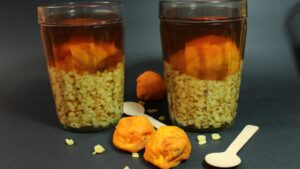
This is considered by Chileans as a drink. I use it as a dessert, personally: Mote con huesillo consists of a dehydrated peach that is put back in its own juice, with sugar and barley. It’s interesting and intriguing. Best place to try it? On top of Cerro San Cristobal.
Palta
And if you are in Chile, you must have some avocado, palta as we call it here. Chile is one of the largest producers in the world, which means we have fresh, delicious fruits most of the year. And it’s so popular here that it easily replaces butter on your bread.
Others you should try
There are of course plenty other things to try. If you go to the coast, try the local version of the crab cake, called Pastel de Jaiva: heavy in cream, but delicious. And you like freshly pressed juice, some local favorites include blueberry juice, prickly pear juice (chirimoya, in Spanish), and a real fresh lemonade with mint and ginger. You will find these in many places, especially around Barrio Lastarria and Barrio Italia.
Now, Santiago is merely the entry point to Chile.
If you come to this beautiful country, you probably already know that it’s all about nature, wineries, beautiful landscapes and adventure sports. But for that, you need to get out of the city. This is what we will talk about in our next articles.

Avid traveler, journalist and writer, he moved away from his native France back in 2006 and settled in Chile. After visiting the country North to South, learning extensively about its culture, History, gastronomy, Thomas started to work as a tour guide. He liked it so much that he ended up creating his own tour agency in Valparaiso, where he lives today. You can visit my site at: https://chileprivatetours.com/
